MIRI Research Day showcases powerhouse Indigenous scholarship
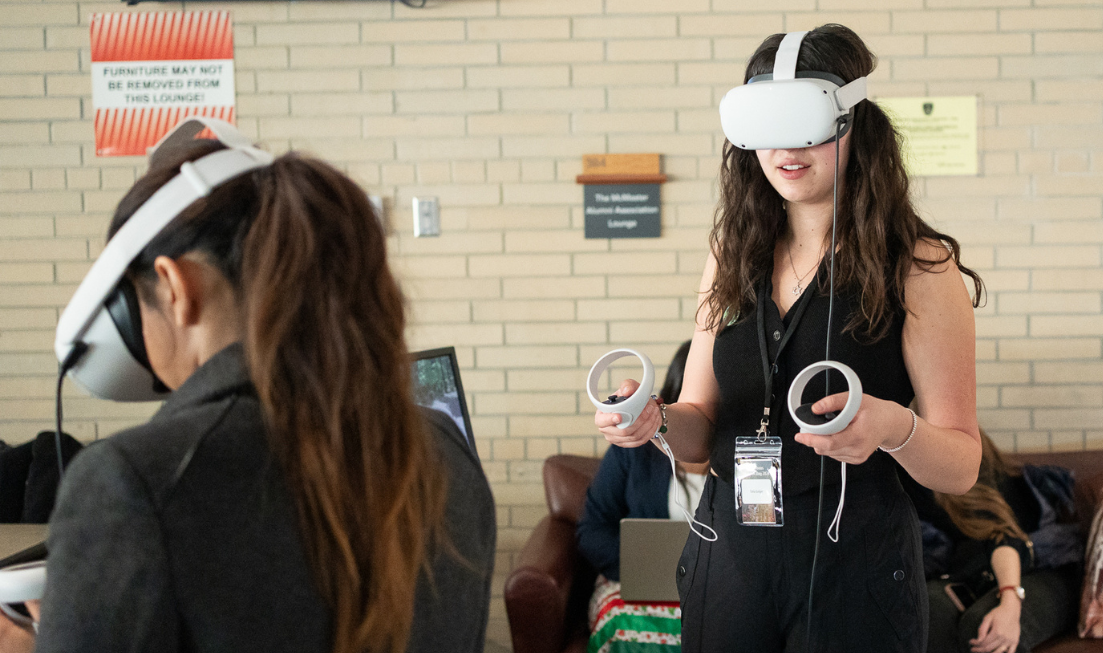
The McMaster Indigenous Research Institute’s annual event included virtual reality, an interactive floor map with augmented reality, and a jam-packed schedule that covered a tremendous breadth of topics. (All photos by Christian Braun)
BY Sonia Verma, pictures by Christian Braun
November 15, 2024
Traditional Ecological Knowledge, Indigenous Ways of Knowing … and Virtual Reality.
Dawn Martin-Hill remembers being stunned when Knowledge Holders at Six Nations told her virtual reality would be the best medium to connect with Indigenous youth and get them interested in the Great Lakes and its waterways.
“I asked them how we could engage with youth in a way that they would experience, learn, understand and care for the waters, without exacerbating the existing mental health problems created by water insecurity,” she told a packed room at the McMaster Indigenous Research Institute (MIRI) Research Day.
“And they said VR. I didn’t even know what that was.”
She learned fast, and the result is Skyworld, an immersive VR experience she created in collaboration with Mohawk College students, telling the Indigenous creation story of Sky Woman during a canoe journey down the Grand River as the world transforms.
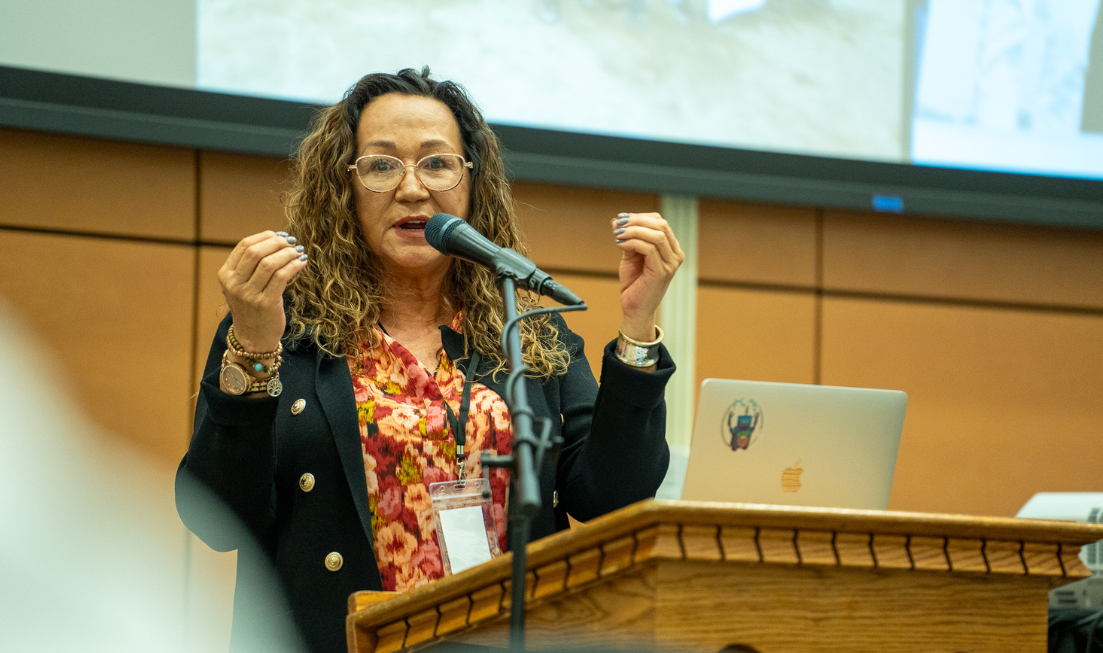
Visitors got to try Skyworld for themselves, learning about traditional Haudenosaunee ways of knowing as they travelled the river.
Martin-Hill, a world-renowned expert on community-led and co-created water research, retired from the university this summer. And while she still has many, many projects on the go, part of her work now is handing over the stewardship of the water to new generations of Indigenous leaders.
“We are preparing youth to be stewards and advocates for the water,” she said.
Martin-Hill’s presentation was followed by Every Drop Counts leader Makasa Looking Horse, Katie Doreen from the Biinaagami initiative, and Six Nations Faithkeeper and Elder Norma Jacobs.
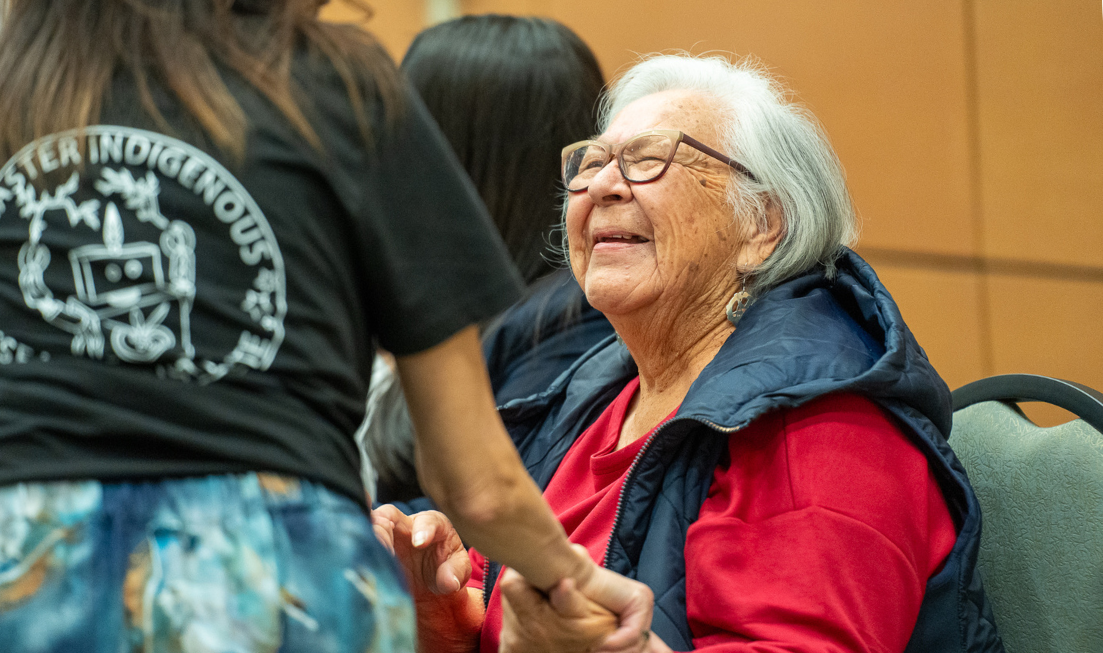
In addition to the projects on water, activism and health, Research Day covered a tremendous breadth of projects and studies: These include language revitalization; troubling narratives surrounding land defence; food programming and identity; cognitive health and dementia prevention; Indigenous medical learners; an immersive experience that reflects on the pandemic; an upcoming digital animation called Deskaheh; and how memes deepen understanding of Indigenous cultures and communities.
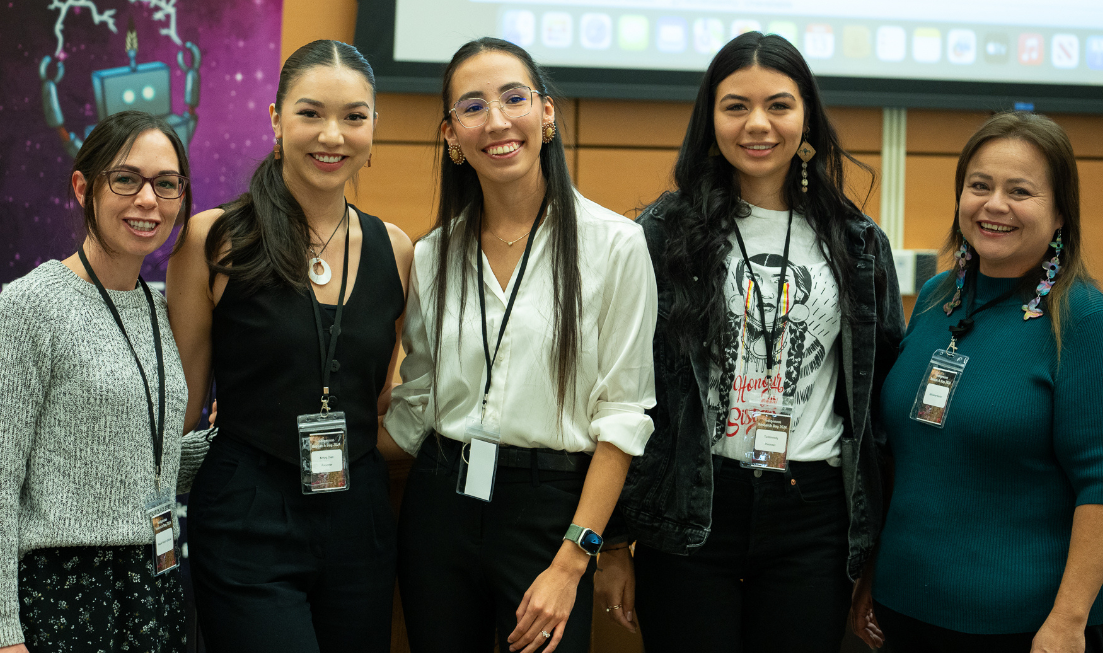
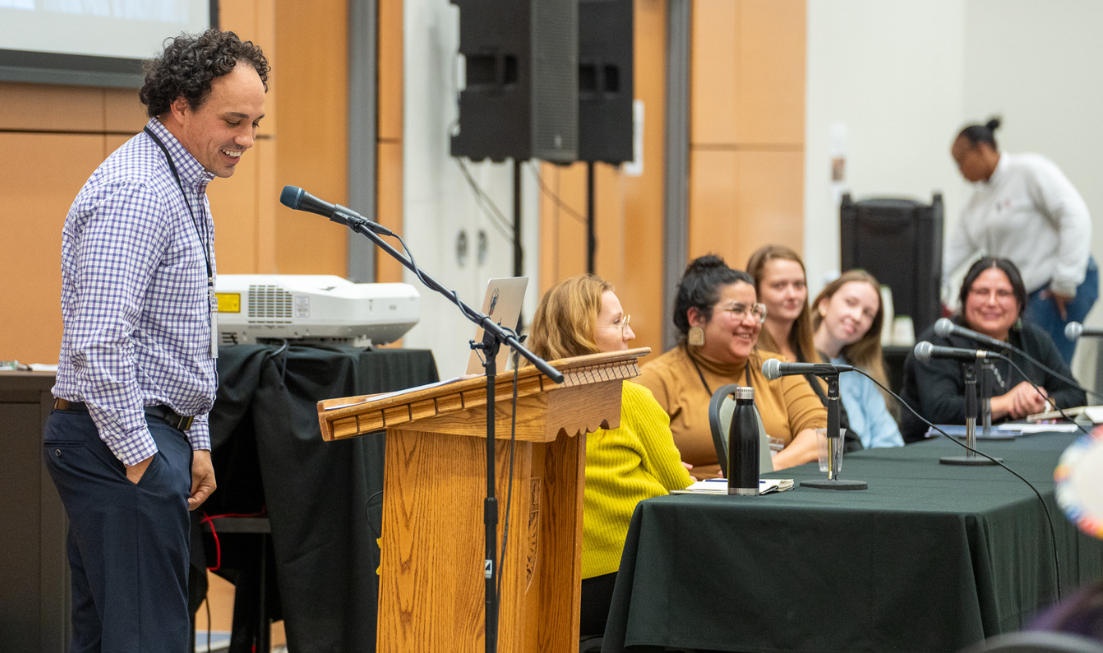
Here are some more scenes from the day:
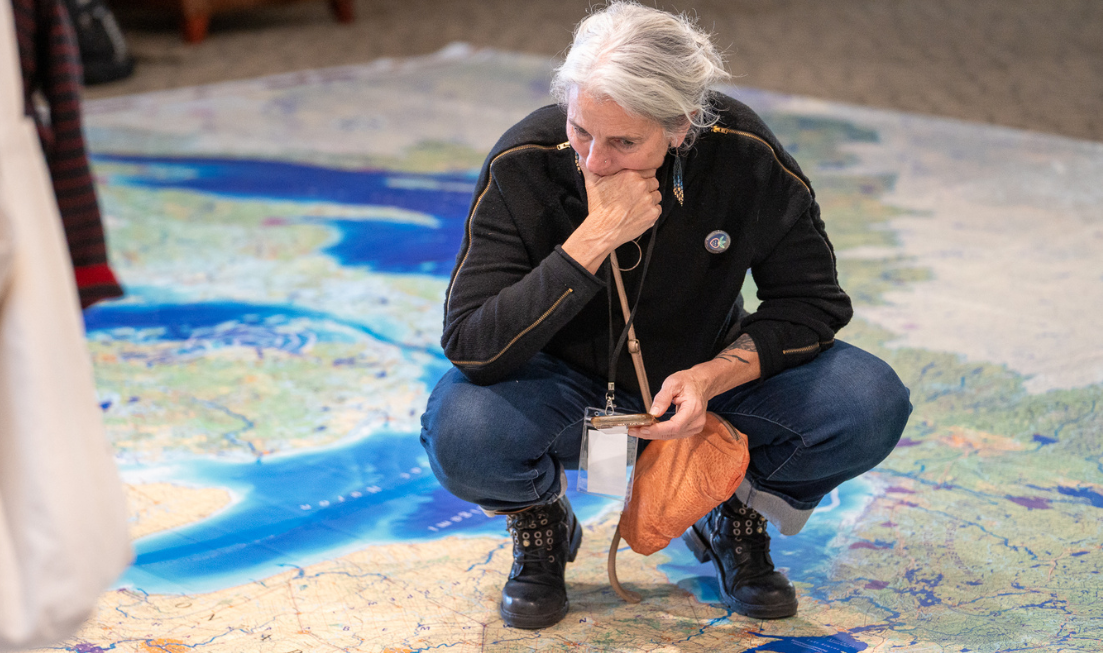
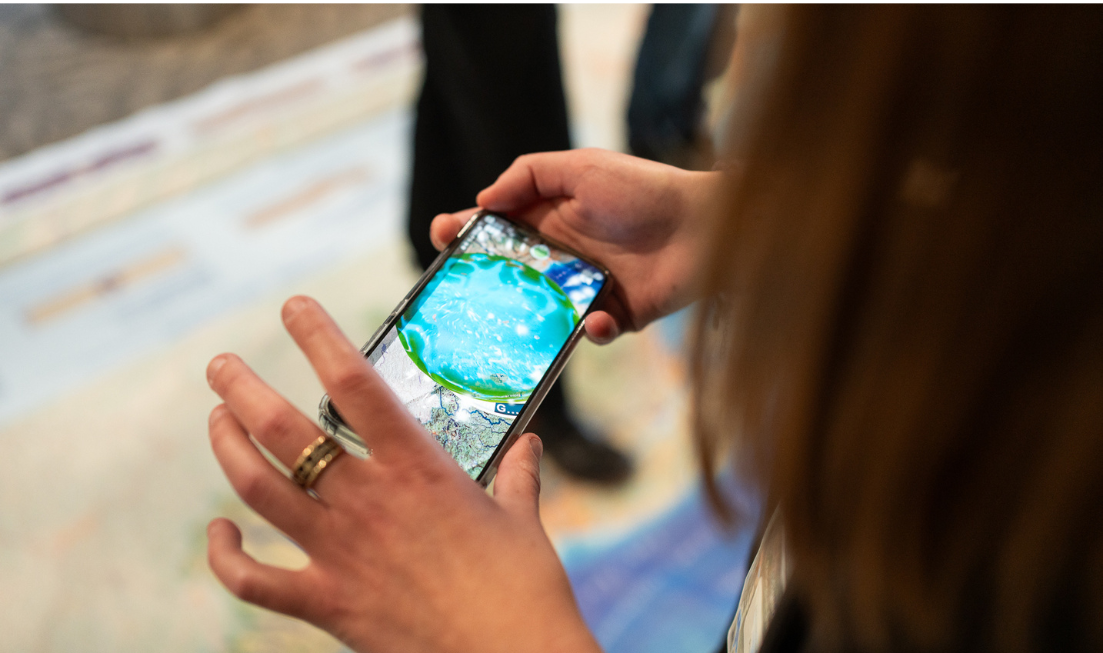
When Katie Doreen walks you through the history of the Great Lakes-St. Lawrence watershed, she literally walks.
Visitors got to move across Doreen’s interactive “Giant Map,” learning about the waterway as they followed the water’s path to the Atlantic. The enormous floor map is also dotted with augmented reality triggers that share the languages, stories and histories of the First Nations communities along the way.
Doreen is the editorial and educational coordinator for Biinaagami, an initiative that educates people about the watershed and the Indigenous communities who live there.
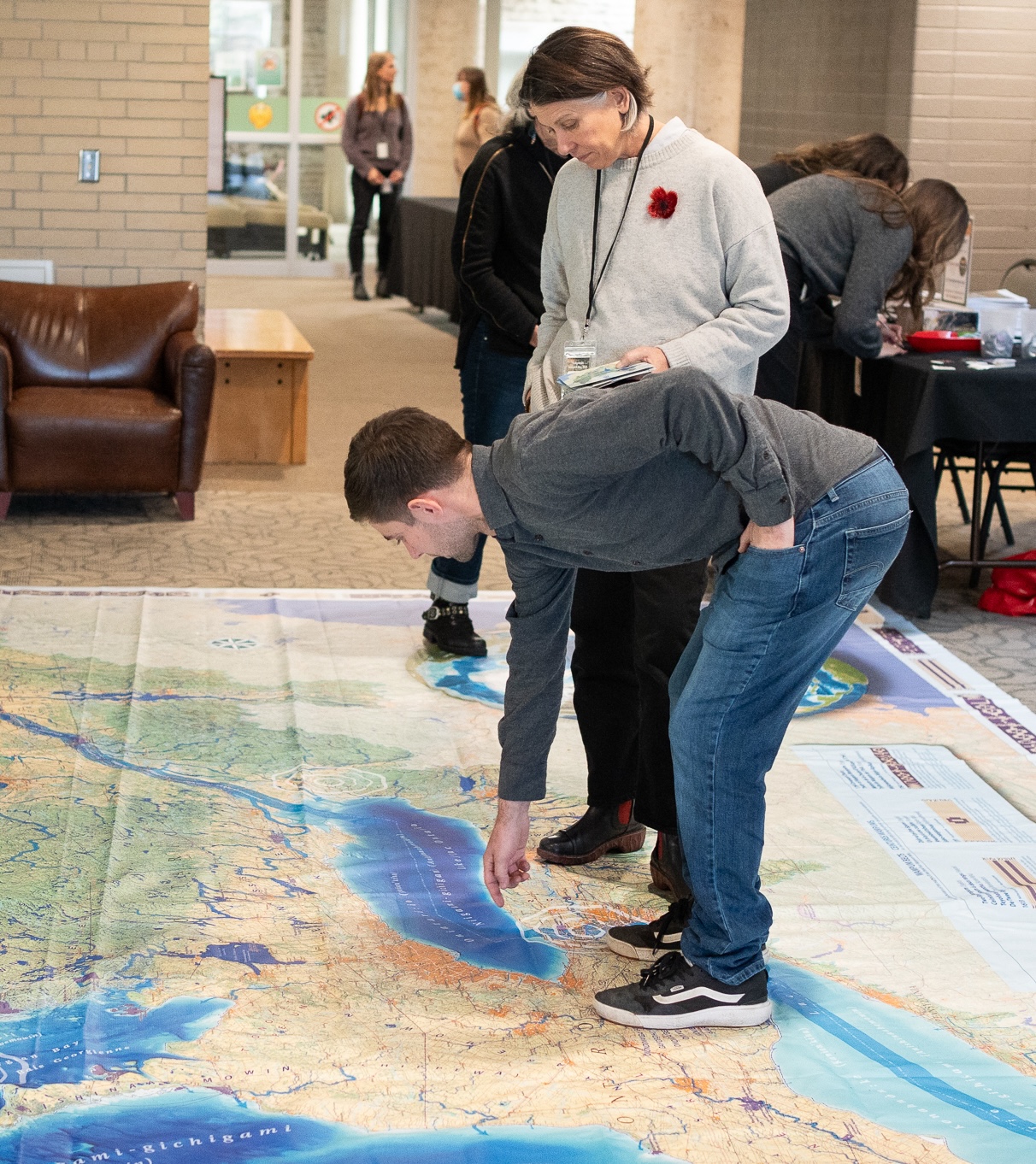
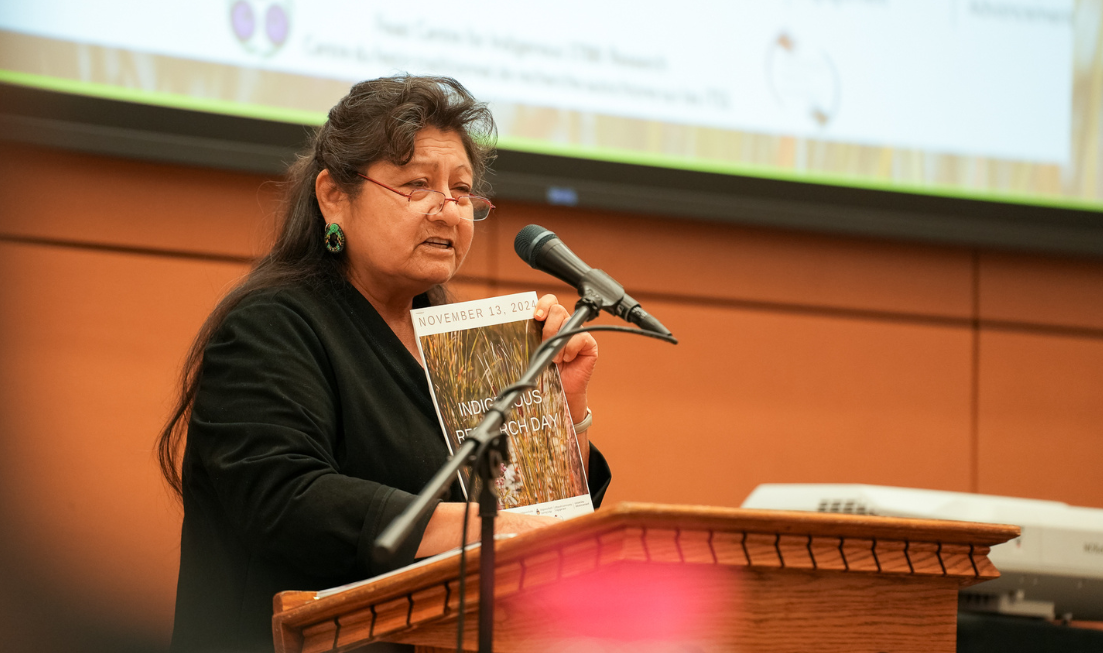
After Elder Dixie Doxtator opened the event by honouring and thanking the land and nature for all its gifts, medicines and nurturing, she held up the day’s program: “The projects in this reflect all the ways in which the natural world is connected to all that we do,” she said.
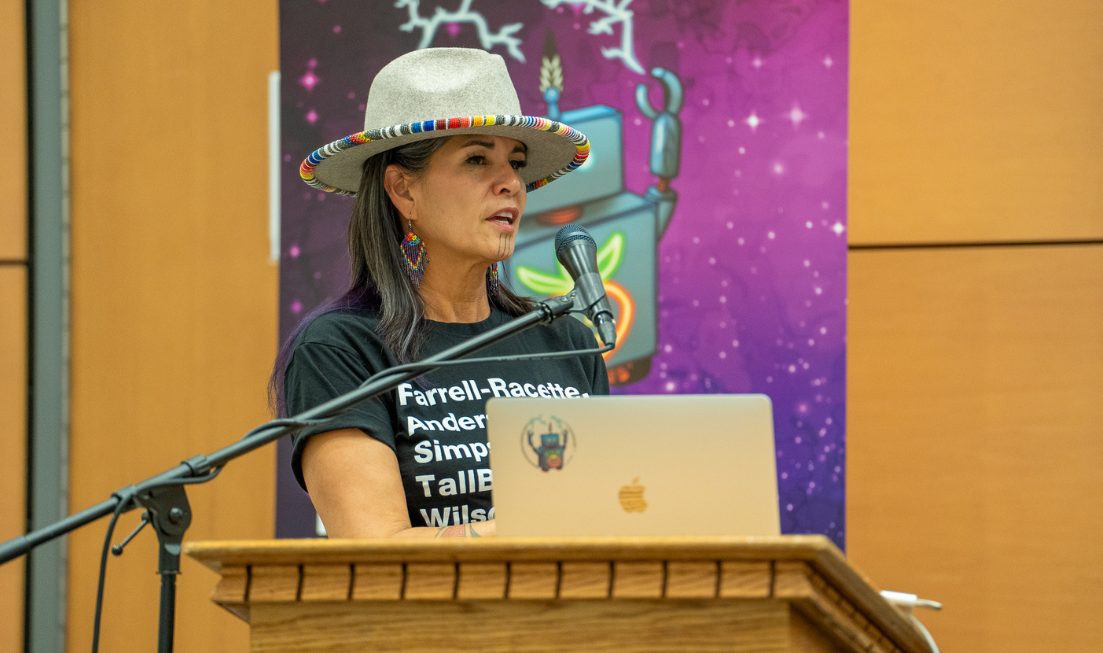
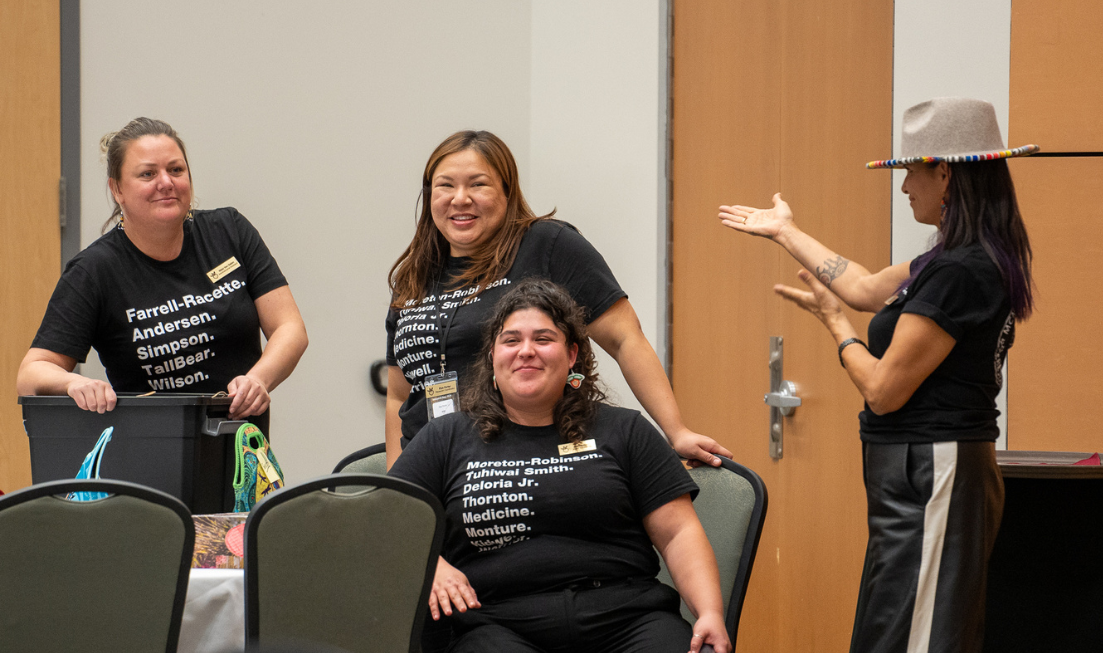
Research Day organizers all wore “Voices of Indigenous Scholars” T-shirts, which list the names of influential scholars whose work has advanced the understanding of Indigenous cultures around the world.
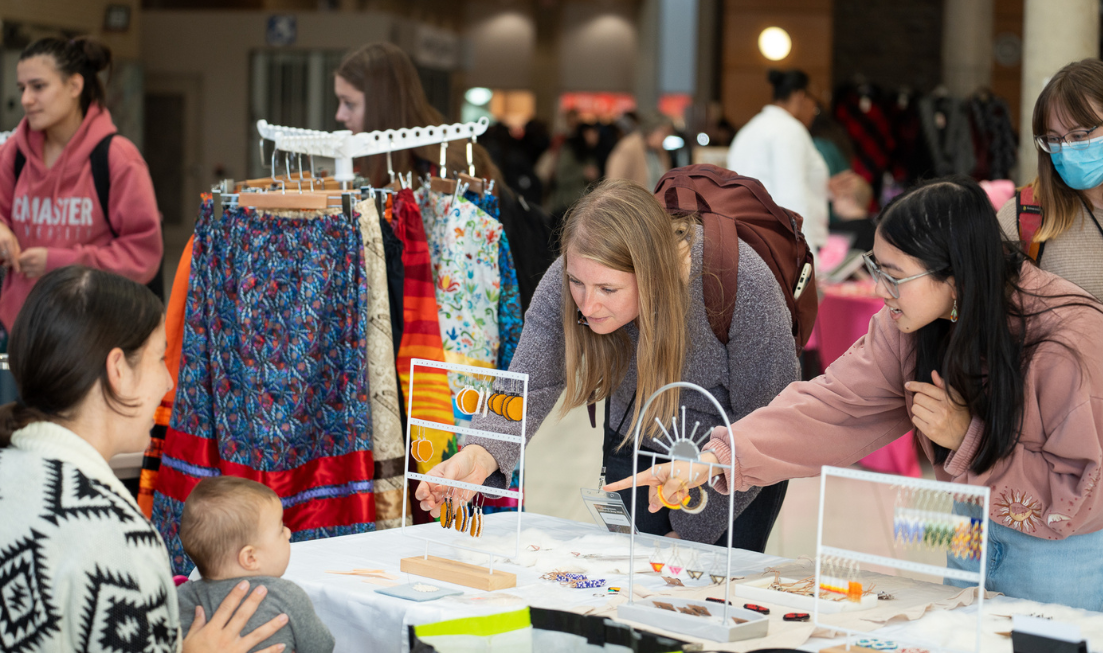
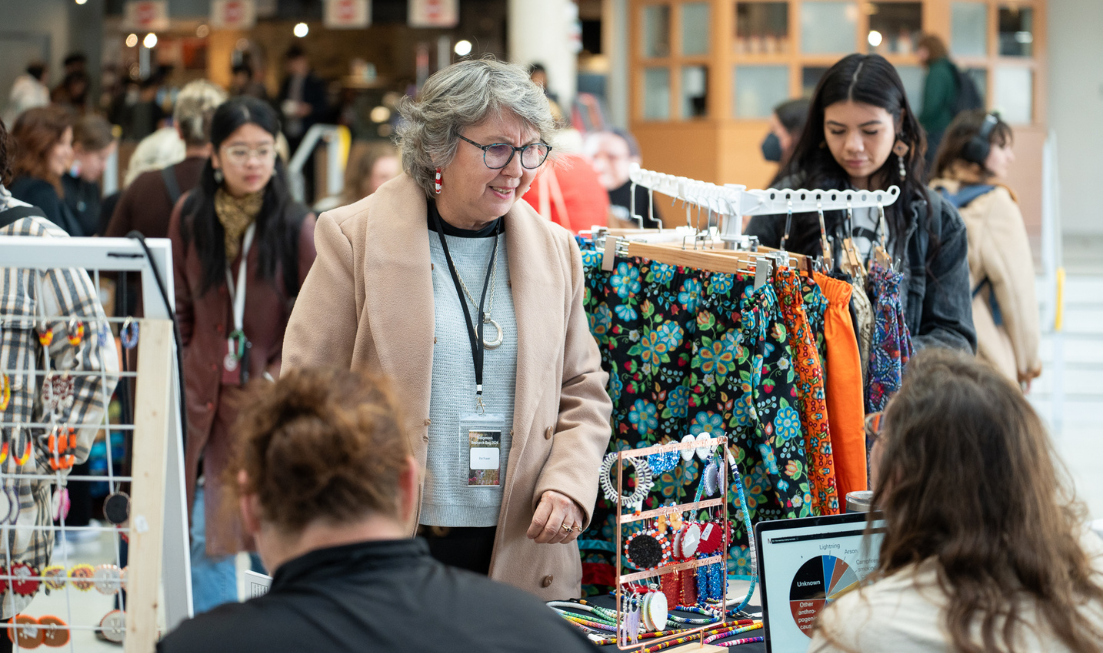
The shirts were one of the many items on sale at MIRI’s own table in the Indigenous market downstairs in the Student Centre atrium. Proceeds from sales went directly to the Prison Education project, which increases access to post-secondary education for incarcerated Indigenous peoples. Other vendors sold beaded items, clothes, candles, jewelry, stickers and more.


